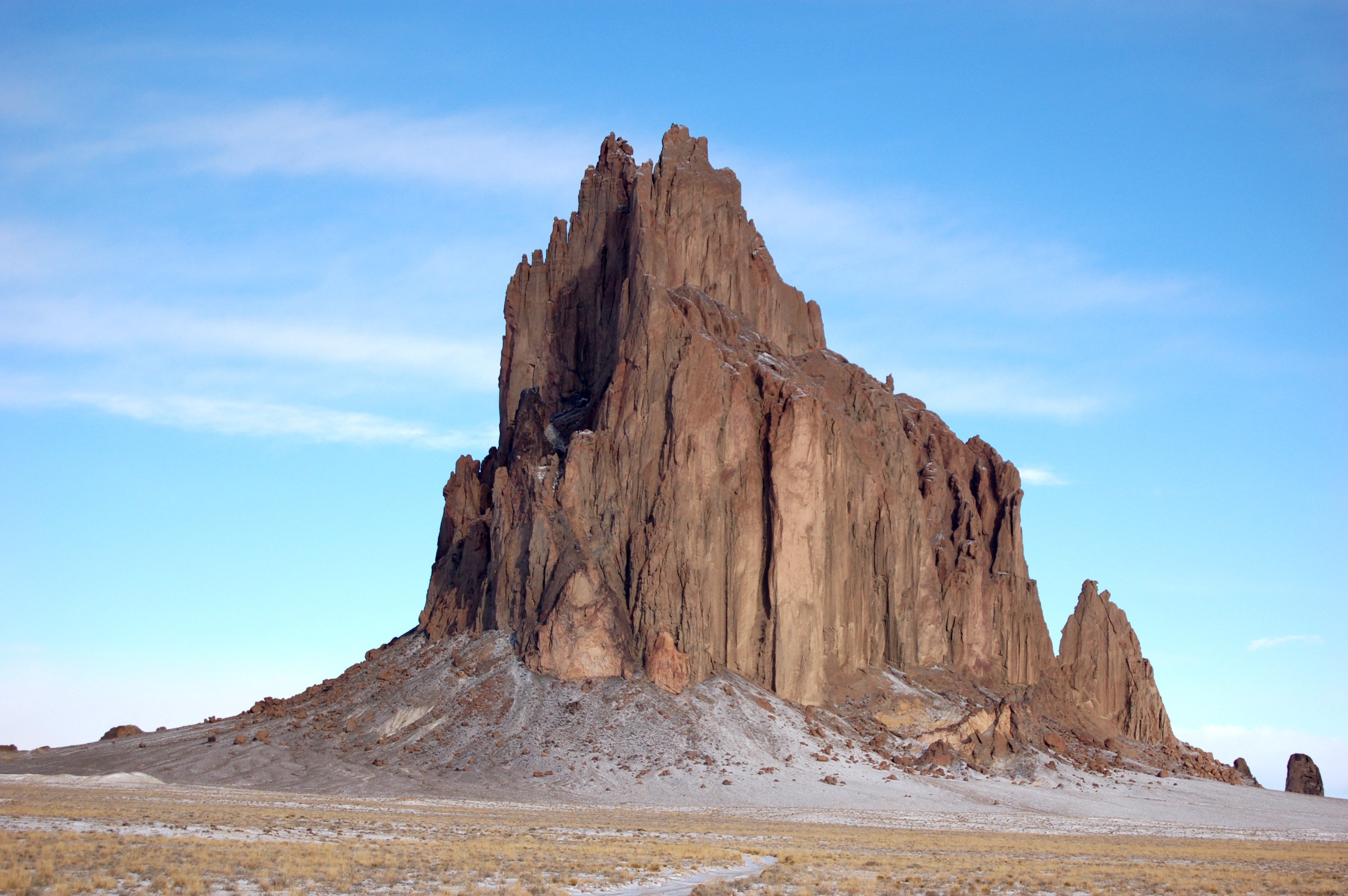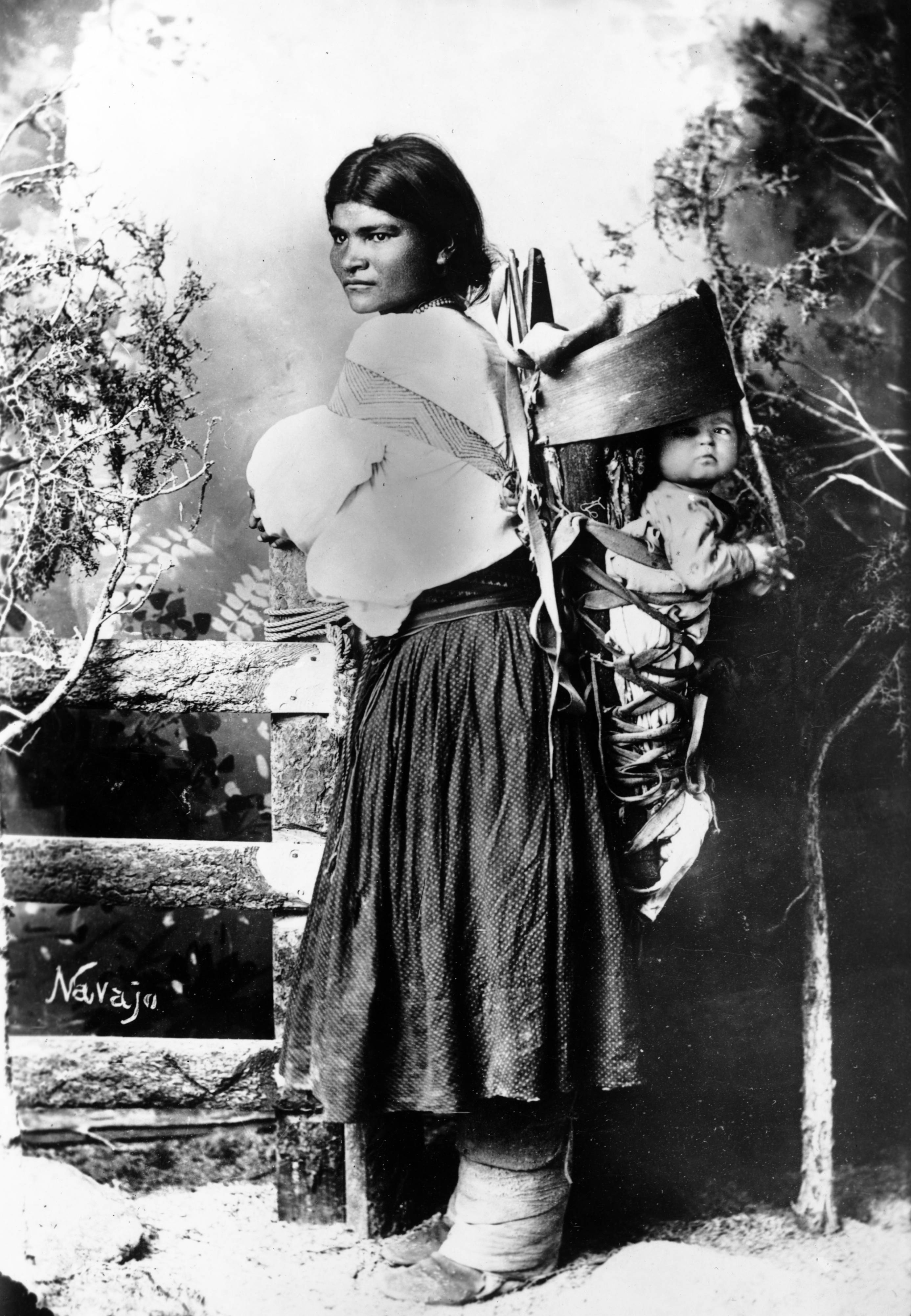|
TahNibaa Naataanii
TahNibaa Naataanii (born May 5, 1967) is a Native American traditional artist and a member of the Navajo Tribe. She has espoused a belief that creativity should be allowed to be the source of art and that artists should not have to confine themselves to a particular style. Naataanii has also stated that weaving art and tradition should be passed along to present and future generations, with her art techniques and mediums being the traditional form, and artistic style dependent on the artist. Biography Naataanii was born on May 5, 1967, in Shiprock, New Mexico, to Sarah H. Natani, a weaver. Her paternal grandmother gave her the name TahNibaa Aglohiigiih, which means "TahNibaa the Weaver". By the age of five Naataanii had moved away from her birthplace and was attending kindergarten in Ft. Defiance, Arizona. She was taught how to weave when she was seven and when she was ten, her family moved to Table Mesa, about 12 miles south from her birthplace. Naataanii continued to weave ... [...More Info...] [...Related Items...] OR: [Wikipedia] [Google] [Baidu] |
Shiprock, New Mexico
Shiprock ( nv, ) is a unincorporated community on the Navajo Nation, Navajo reservation in San Juan County, New Mexico, United States. The population was 7,718 people in the 2020 United States census, 2020 census. For statistical purposes, the United States Census Bureau has defined Shiprock as a census-designated place (CDP). It is part of the Farmington, New Mexico, Farmington Metropolitan Statistical Area. Shiprock is named after the nearby Shiprock rock formation. Since 1903, the town has been called ''Naat’áanii Nééz'' (meaning “tall leader” in the Navajo language) after the San Juan Indian Agency superintendent William T. Shelton who settled Shiprock for the United States government. Diné College is a local four-year college (formerly Navajo Community College), a Tribal colleges and universities, tribally controlled community college with seven other campuses across the Navajo Nation. It is the site of a Chapter House for the Navajo, a Bureau of Indian Affairs ag ... [...More Info...] [...Related Items...] OR: [Wikipedia] [Google] [Baidu] |
Navajo Women Artists
The Navajo (; British English: Navaho; nv, Diné or ') are a Native American people of the Southwestern United States. With more than 399,494 enrolled tribal members , the Navajo Nation is the largest federally recognized tribe in the United States; additionally, the Navajo Nation has the largest reservation in the country. The reservation straddles the Four Corners region and covers more than 27,325 square miles (70,000 square km) of land in Arizona, Utah, and New Mexico. The Navajo Reservation is slightly larger than the state of West Virginia. The Navajo language is spoken throughout the region, and most Navajos also speak English. The states with the largest Navajo populations are Arizona (140,263) and New Mexico (108,306). More than three-fourths of the enrolled Navajo population resides in these two states. [...More Info...] [...Related Items...] OR: [Wikipedia] [Google] [Baidu] |
Navajo Textile Artists
The Navajo (; British English: Navaho; nv, Diné or ') are a Native Americans in the United States, Native American people of the Southwestern United States. With more than 399,494 enrolled tribal members , the Navajo Nation is the largest federally recognized tribe in the United States; additionally, the Navajo Nation has the largest Indian reservation, reservation in the country. The reservation straddles the Four Corners region and covers more than 27,325 square miles (70,000 square km) of land in Arizona, Utah, and New Mexico. The Navajo Reservation is slightly larger than the state of West Virginia. The Navajo language is spoken throughout the region, and most Navajos also speak English. The states with the largest Navajo populations are Arizona (140,263) and New Mexico (108,306). More than three-fourths of the enrolled Navajo population resides in these two states. [...More Info...] [...Related Items...] OR: [Wikipedia] [Google] [Baidu] |
21st-century Native American Women
The 1st century was the century spanning AD 1 ( I) through AD 100 ( C) according to the Julian calendar. It is often written as the or to distinguish it from the 1st century BC (or BCE) which preceded it. The 1st century is considered part of the Classical era, epoch, or historical period. The 1st century also saw the appearance of Christianity. During this period, Europe, North Africa and the Near East fell under increasing domination by the Roman Empire, which continued expanding, most notably conquering Britain under the emperor Claudius (AD 43). The reforms introduced by Augustus during his long reign stabilized the empire after the turmoil of the previous century's civil wars. Later in the century the Julio-Claudian dynasty, which had been founded by Augustus, came to an end with the suicide of Nero in AD 68. There followed the famous Year of Four Emperors, a brief period of civil war and instability, which was finally brought to an end by Vespasian, ninth Roman emperor, a ... [...More Info...] [...Related Items...] OR: [Wikipedia] [Google] [Baidu] |
21st-century Native American Artists
The 1st century was the century spanning AD 1 ( I) through AD 100 ( C) according to the Julian calendar. It is often written as the or to distinguish it from the 1st century BC (or BCE) which preceded it. The 1st century is considered part of the Classical era, epoch, or historical period. The 1st century also saw the appearance of Christianity. During this period, Europe, North Africa and the Near East fell under increasing domination by the Roman Empire, which continued expanding, most notably conquering Britain under the emperor Claudius ( AD 43). The reforms introduced by Augustus during his long reign stabilized the empire after the turmoil of the previous century's civil wars. Later in the century the Julio-Claudian dynasty, which had been founded by Augustus, came to an end with the suicide of Nero in AD 68. There followed the famous Year of Four Emperors, a brief period of civil war and instability, which was finally brought to an end by Vespasian, ninth Roman em ... [...More Info...] [...Related Items...] OR: [Wikipedia] [Google] [Baidu] |
21st-century American Artists
The 1st century was the century spanning AD 1 ( I) through AD 100 ( C) according to the Julian calendar. It is often written as the or to distinguish it from the 1st century BC (or BCE) which preceded it. The 1st century is considered part of the Classical era, epoch, or historical period. The 1st century also saw the appearance of Christianity. During this period, Europe, North Africa and the Near East fell under increasing domination by the Roman Empire, which continued expanding, most notably conquering Britain under the emperor Claudius ( AD 43). The reforms introduced by Augustus during his long reign stabilized the empire after the turmoil of the previous century's civil wars. Later in the century the Julio-Claudian dynasty, which had been founded by Augustus, came to an end with the suicide of Nero in AD 68. There followed the famous Year of Four Emperors, a brief period of civil war and instability, which was finally brought to an end by Vespasian, ninth Roman em ... [...More Info...] [...Related Items...] OR: [Wikipedia] [Google] [Baidu] |
Living People
Related categories * :Year of birth missing (living people) / :Year of birth unknown * :Date of birth missing (living people) / :Date of birth unknown * :Place of birth missing (living people) / :Place of birth unknown * :Year of death missing / :Year of death unknown * :Date of death missing / :Date of death unknown * :Place of death missing / :Place of death unknown * :Missing middle or first names See also * :Dead people * :Template:L, which generates this category or death years, and birth year and sort keys. : {{DEFAULTSORT:Living people 21st-century people People by status ... [...More Info...] [...Related Items...] OR: [Wikipedia] [Google] [Baidu] |
Weavers From New Mexico
Weaver or Weavers may refer to: Activities * A person who engages in weaving fabric Animals * Various birds of the family Ploceidae * Crevice weaver spider family * Orb-weaver spider family * Weever (or weever-fish) Arts and entertainment * ''Weaver'' (Stephen Baxter), the fourth novel in Baxter's Time's Tapestry series * The Weavers, a folk music group formed in 1947 by Ronnie Gilbert, Lee Hays, Fred Hellerman and Pete Seeger * ''The Weavers'' (1905 film), a silent, black and white documentary film made in 1905 by the Balkan film pioneers the Manaki brothers * ''The Weavers'' (play), English title of ''Die Weber'', a play by Gerhart Hauptmann * Weaver, an abandoned ghost town in the 2002 film ''Disappearance'' * Corporal Weaver, a character in the 1998 DreamWorks Animation animated film '' Antz'' * Weaver, the codename for Taylor Hebert in the web serial ''Worm'' * Weaver Marquez, a character in the narrative videogame Kentucky Route Zero * Grigori Weaver, a charac ... [...More Info...] [...Related Items...] OR: [Wikipedia] [Google] [Baidu] |
Navajo
The Navajo (; British English: Navaho; nv, Diné or ') are a Native American people of the Southwestern United States. With more than 399,494 enrolled tribal members , the Navajo Nation is the largest federally recognized tribe in the United States; additionally, the Navajo Nation has the largest reservation in the country. The reservation straddles the Four Corners region and covers more than 27,325 square miles (70,000 square km) of land in Arizona, Utah, and New Mexico. The Navajo Reservation is slightly larger than the state of West Virginia. The Navajo language is spoken throughout the region, and most Navajos also speak English. The states with the largest Navajo populations are Arizona (140,263) and New Mexico (108,306). More than three-fourths of the enrolled Navajo population resides in these two states. [...More Info...] [...Related Items...] OR: [Wikipedia] [Google] [Baidu] |





